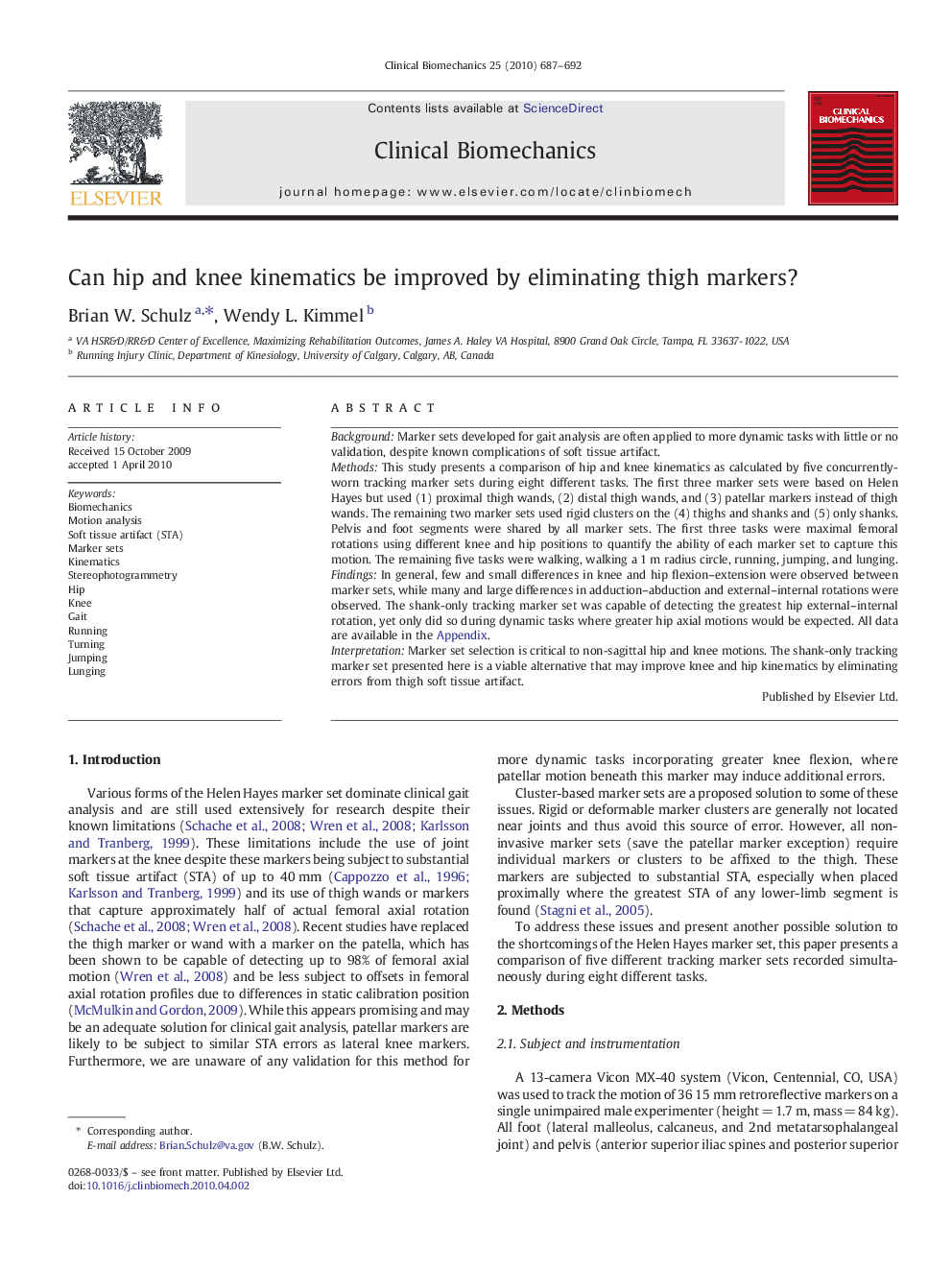| کد مقاله | کد نشریه | سال انتشار | مقاله انگلیسی | نسخه تمام متن |
|---|---|---|---|---|
| 4050945 | 1264966 | 2010 | 6 صفحه PDF | دانلود رایگان |

BackgroundMarker sets developed for gait analysis are often applied to more dynamic tasks with little or no validation, despite known complications of soft tissue artifact.MethodsThis study presents a comparison of hip and knee kinematics as calculated by five concurrently-worn tracking marker sets during eight different tasks. The first three marker sets were based on Helen Hayes but used (1) proximal thigh wands, (2) distal thigh wands, and (3) patellar markers instead of thigh wands. The remaining two marker sets used rigid clusters on the (4) thighs and shanks and (5) only shanks. Pelvis and foot segments were shared by all marker sets. The first three tasks were maximal femoral rotations using different knee and hip positions to quantify the ability of each marker set to capture this motion. The remaining five tasks were walking, walking a 1 m radius circle, running, jumping, and lunging.FindingsIn general, few and small differences in knee and hip flexion–extension were observed between marker sets, while many and large differences in adduction–abduction and external–internal rotations were observed. The shank-only tracking marker set was capable of detecting the greatest hip external–internal rotation, yet only did so during dynamic tasks where greater hip axial motions would be expected. All data are available in the Appendix.InterpretationMarker set selection is critical to non-sagittal hip and knee motions. The shank-only tracking marker set presented here is a viable alternative that may improve knee and hip kinematics by eliminating errors from thigh soft tissue artifact.
Journal: Clinical Biomechanics - Volume 25, Issue 7, August 2010, Pages 687–692